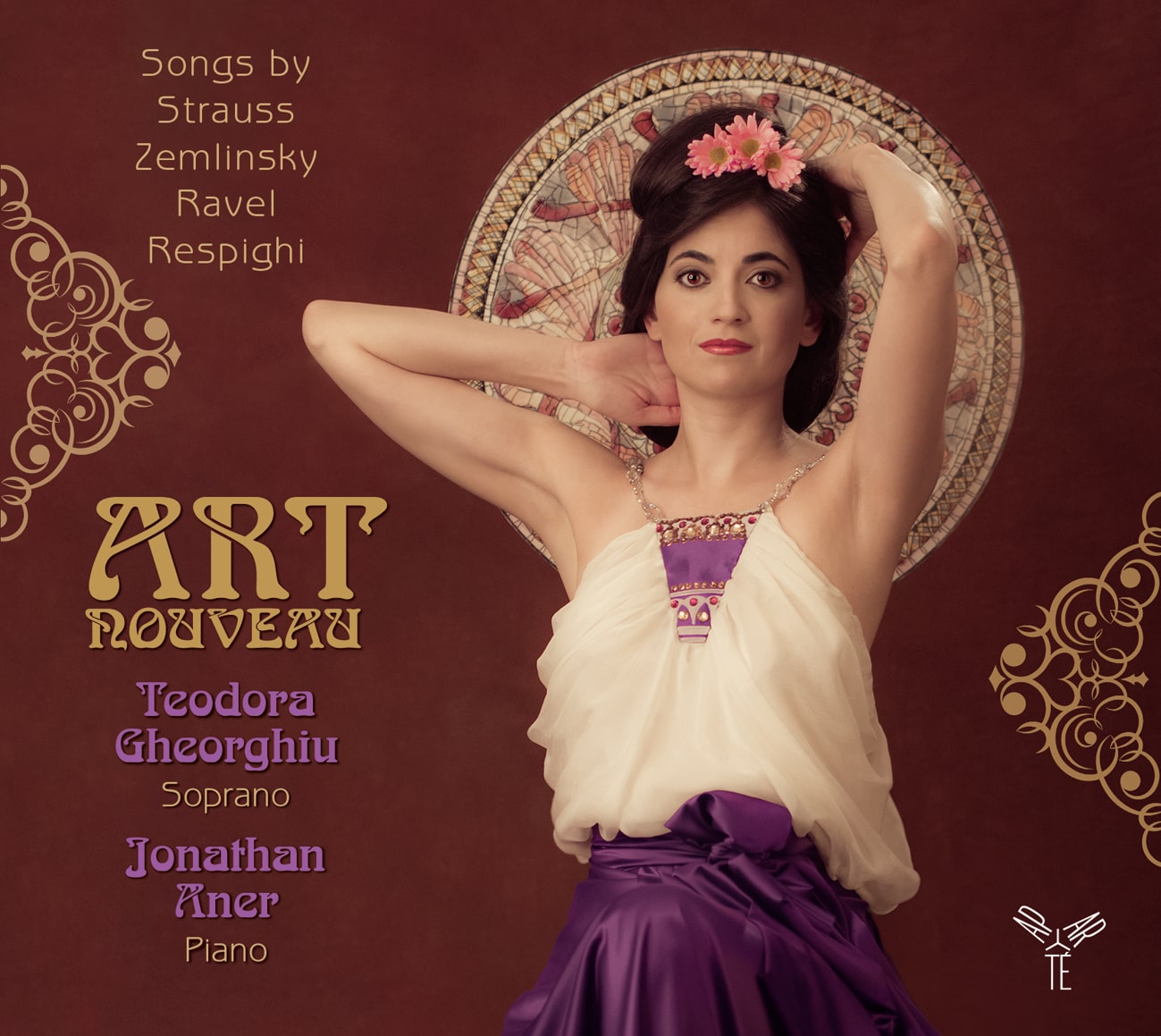Teodora Gheorghiu, Jonathan Aner
AP054 - 1CD - 59' - Mar 25, 2013
This album is a journey into the elegance and refinement of the Belle Époque. Inspired by the aesthetics of Alfons Mucha, it celebrates a total art where music and poetry intertwine. Teodora Gheorghiu, one of the greatest sopranos of her generation, brings it to life with striking expressiveness.
Softly clad young women, wrapped in soft, flowing fabrics covered in flowers and arabesques - this is what can be seen on Alfons Mucha's posters, whose style is evoked on the cover. The staging of beauty, the move away from realistic representation, the stylization of man and nature in an ideal of aesthetic sensuality is typical of this period at the turn of the 20th century, and is reflected in art in all fields. Vienna, Paris and Munich were centers of a pictorial and literary trend that evolved into art for art's sake.
This is the story of Teodora Gheorghiu, undoubtedly one of the greatest sopranos of her generation.
Richard Strauss (1864-1949)
Mädchenblumen Op. 22
1. I. Kornblumen
2. II. Mohnblumen
3. III. Epheu
4. IV. Wasserrose
Richard Strauss (1864-1949)
Drei Lieder der Ophelia Op. 67 No. 1-3
5. I. Wie erkenn ich mein Treulieb vor andern nun?
6. II. Guten Morgen's ist SanktValentinstag
7. III. Sie trugen ihn auf der Bahre bloß
Alexander Zemlinsky (1871-1942)
Walzer-Gesänge nach toskanischen Volksliedern von Ferdinand Gregorovius Op.6:
8. I. Liebe Schwalbe
9. II. Klagen ist der Mond gekommen
10. III. Fensterlein, nachts bist du zu
11. IV. Ich geh' des Nachts
12. V. Blaues Sternlein
13. VI. Briefchen schrieb ich
Maurice Ravel (1875-1937)
Cinq mélodies populaires grecques
14. I. Le Réveil de la Mariée
15. II. Là-bas, vers l'église
16. III. Quel galant m'est comparable
17. IV. Chanson des cueilleuses de lentisques
18. V. Tout gai!
Maurice Ravel (1875-1937)
19. Ballade de la reine morte d'aimer
20. Rêves
21. Manteau de fleurs
22. Tripatos (Danse chantée)
Ottorino Respighi (1879-1936)
Deità silvane
23. I. I Fauni
24. II. Musica in horto
25. III. Egle
26. IV. Acqua
27. V. Crepuscolo


